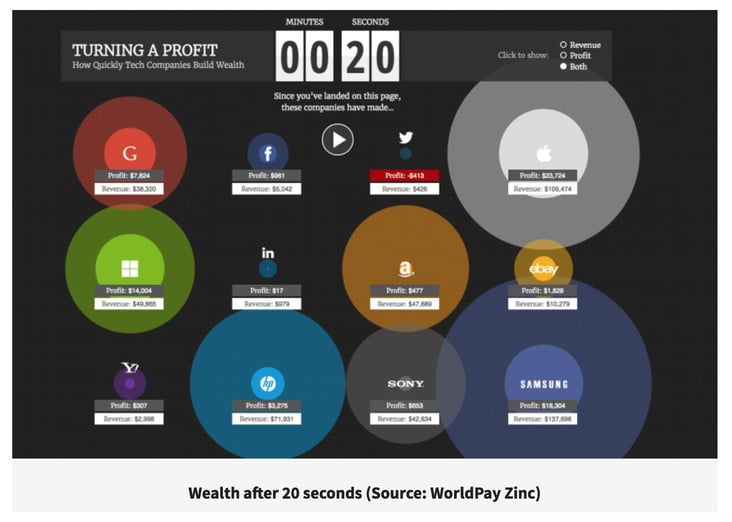***Updated in February 2021***
For too long SEO, PR and content teams in many agencies have worked in silos - each doing their job well, but never reaching their full potential. Here we offer five ways to build a combined SEO, PR and content strategy for happier teams and better results.
The future of Search Engine Optimisation (SEO) is a source of constant debate.
A conference back in 2019, someone summed the topic up as:
It’s time to stop handing your search team a finished piece of content the day before publishing and saying “Hi mate, can you just SEO this for me?”
Not only is this approach one of the biggest frustrations facing SEO experts, it is also more time consuming, holds up the content creation pipeline and is becoming less effective year on year.
Google and other search engines are constantly developing their ranking algorithms to improve how they understand search intent and what makes a good quality piece of content.
This means is that siloed teams need to come together to develop an SEO, PR and content strategy that works for all.
Here are five ways this can be done:
1. Use SEO keyword research to brainstorm your content ideas
Remember, the reason Google has become the dominant force is because it has continually got better at providing the most relevant results to its users.

So, simply finding a keyword “that sort of works” and including it a few times in an article is not the miracle method for attracting organic traffic it once was.
Instead, you should be doing your keyword research at the beginning of the content process so that the content can be crafted with your target in mind. This keeps you focused on the content’s goal of being useful, engaging and informative to your target audience, and also helps you include your target keyword (or close variations of it) more naturally so that it is understandable for humans and search engines.
Doing your keyword research first also creates opportunities in the content brainstorming process, as keyword research is essentially building a list of pain points your target audience is experiencing, and they’re using Google to find a suitable answer.
It’s a cry for help that you can answer with content.
But don’t forget, just because you’ve found a good keyword to target and can write a piece of content that can provide the answer to the search, that doesn’t necessarily mean it’s going to rank or bring traffic. Which brings us to the next point…
2. Use SEO to understand the competitive landscape for your content ideas
If you take one thing from this article, it’s that the most important thing you can do after choosing your target keyword is to Google it and look at the current results page.
You want to be checking:
- Does Google understand the keyword the same way I do? Or are there lots of articles on completely irrelevant topics? This is particularly common when using acronyms or popular industry terms, as they can mean different things outside of a specific sector.
- Is the reason the keyword gets searched so much because there’s a company out there with the same name?
- What’s the competitive landscape like? Are there ads, shopping options, maps with local results, knowledge graphs or lots of content from highly authoritative sites like Wikipedia, news websites, universities or big corporations?
If any of these are true, you may want to consider a more specific or alternative keyword.
It’s not all doom and gloom though. Reviewing the results page can also give you a good idea of which direction to take your content. This is because you can…
3. Use the Google results pages to create content that beats the competition
According to SEO guru Rand Fishkin of MOZ, your goal for an important keyword or topic related to your business should be to create 10x Content – that is, content that is 10 times better than what’s currently out there and stands out from the pack.
In much the same way that PR uses market or customer research to generate content ideas, you can use keyword research and the results page to help you develop the angle of what you’re going to write.
For example, if the results page is currently a list of academic articles, you may be able to stand out and attract clicks by providing a beginner’s guide to the topic, or by including information in a different format such as a video or infographic.
This kind of content has other benefits too. If it’s something truly interesting and useful that sets itself apart from the competition, then it will probably be of interest to journalists too and can make up part of your PR programme. Speaking of PR…
4. Include the impact of PR on SEO in your reporting
It’s becoming easier to measure the impact of PR in the age of digital analytics - but steer well clear of AVEs (advertising value equivalency).

Source: PainePublishing.com
Two metrics that should be considered for PR reporting in the same conversation as circulation or monthly website visits, are Domain Authority (DA) and the number of Followed Links to a client’s website you’ve created.
Followed Links act as “endorsements” of your website by someone else and are used by search engines to assess authoritativeness. Marking a link as “no follow” removes this endorsement, so use a tool like the MOZ Bar to check which your target website offers.
Domain Authority (DA) is a measure from 1-100 to describe which websites have the most trusted information and are more likely to be ranked by search engines. Government, news and university websites sit at the top, websites with no followed links at the bottom.
So, if your PR activity has generated a followed link from a high DA website you should be shouting about it in your reports, because these are like gold dust in the eyes of most in the SEO industry.
If you have developed a relationship with a high DA website that gives followed links, you should consider prioritising them over other target publications. PROs are great at creating thought leadership content, so by pitching it for link building and PR purposes doubles the impact.
It also provides more lasting value.
That link on the Guardian website is going to be there long after the print edition was used to wrap someone’s fish and chips.
Getting links through PR isn’t easy however, as not every site gives one out just simply for contributing a by-lined piece. However, if you tie this back to the 10x content mentioned earlier, you have something extra to pitch out that people will want to publicise and link back to.
For example, way back in 2016, World Pay created a tool visualising the amount of profit made by the big tech companies every second. It secured loads of coverage such as this) and links back to the World Pay site. The tool is no longer live, so that’s a load of high DA links no longer adding positive value to the site’s SEO.

5. Create topic clusters to provide SEO support to your key website pages and boost their rankings
Topic clusters is a concept that has been around for a long time, but is now a major focus for website teams, SEO experts, contents teams, Inbound Marketers and PR professionals.
The concept is about creating clusters of content rather than a series of unrelated pages, articles and blog posts. Watch the video below to learn more:
This might sound similar to your current content strategy, which is great, so make sure it also incorporates elements that impact SEO – keyword research, hierarchical URL structure and internal linking. The overall goal is to make your website (and business) a recognised leader on a large topic that attracts a lot of monthly keyword searches.
Furthermore, if you tie in your topic cluster strategy with your PR activity, you have an extra channel for generating eyes on your content and generating visits and links to your site.
If you’re looking to develop your PR strategy you can find out more about our B2B technology PR consultancy services or get in touch with one of the team.
Tags: Owned Media, PR Advice, Digital PR, PR measurement





.png?width=60&name=twitter-logo%20(1).png)
